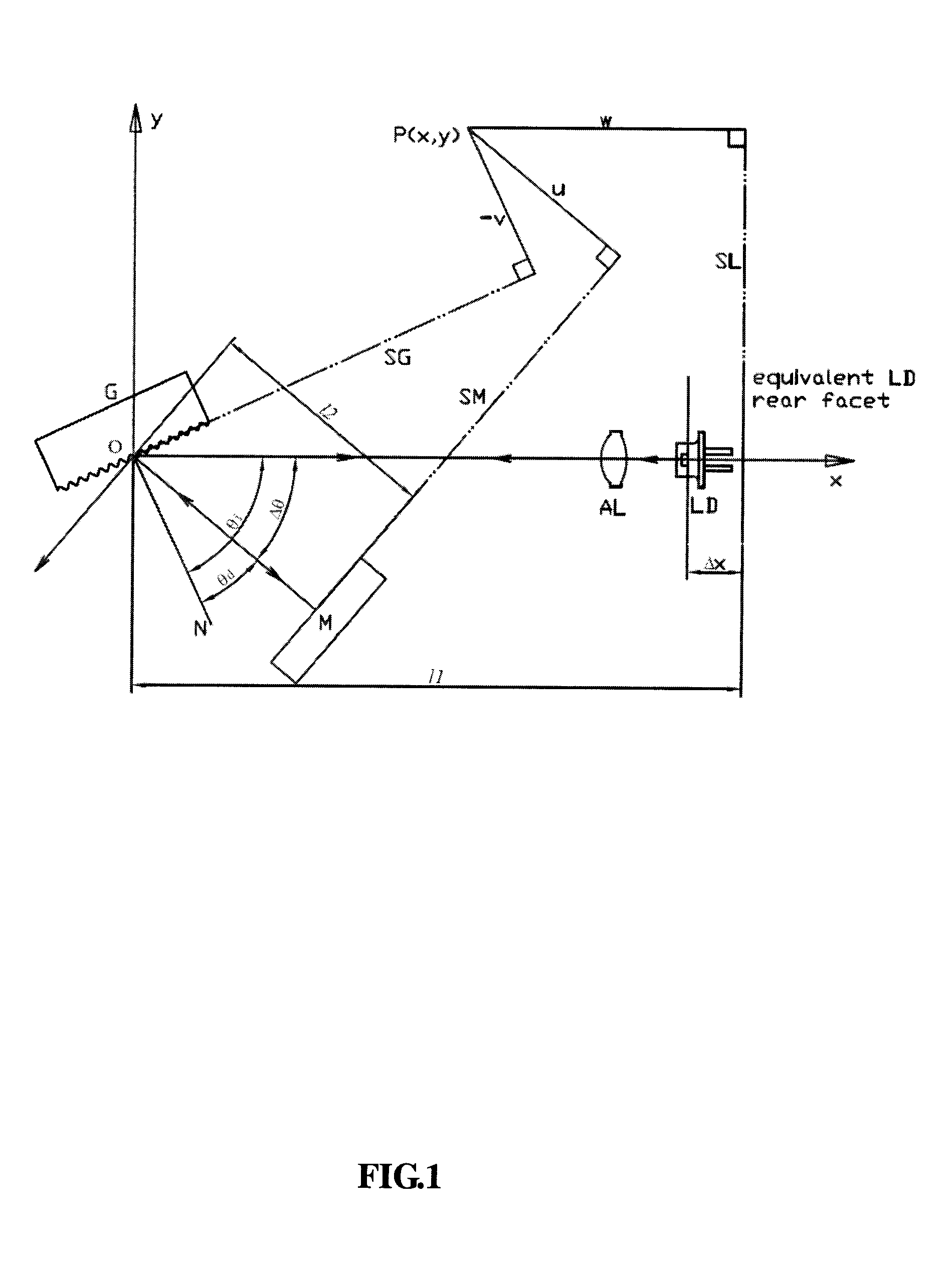Grating external-cavity semiconductor laser and quasi-synchronous tuning method thereof
a semiconductor laser and external cavity technology, applied in semiconductor lasers, laser output parameters control, laser details, etc., can solve the problems of small continuous tuning range without mode-hopping, inability to adjust and apply lasers, and inability to achieve synchronous tuning, etc., to achieve flexible and powerful synchronous tuning, the effect of reducing the number of synchronous tuning constraint conditions
- Summary
- Abstract
- Description
- Claims
- Application Information
AI Technical Summary
Benefits of technology
Problems solved by technology
Method used
Image
Examples
Embodiment Construction
[0052]FIGS. 7-11 show various embodiments of the determination of the quasi-synchronous tuning rotation center of grating external-cavity semiconductor laser according to the present invention respectively.
[0053]FIGS. 7 and 8 show the cases of rotating the grating to perform tuning, wherein both of the incidence angle θi and diffraction angle θd of light on the grating G change. For grating external-cavity semiconductor laser in grazing-incidence configuration and grazing-diffraction configuration, when coefficient B in Eq.(6) is zero, quasi-synchronous tuning rotation center Pq(xq, yq) of the grating G satisfies the following condition:
yq=y0=-(xq-x0)·tanΔθ2(8)[0054]wherein x0 and y0 are the coordinates of synchronous tuning rotation center given by Eq.(3), Δθ is the difference between the incidence angle and the diffraction angle, that is, Δθ=θi−θd. On the xOy plane, the trace of the grating rotation center coordinate Pq(xq, yq) satisfying Eq.(8) is a line passing through synchrono...
PUM
 Login to View More
Login to View More Abstract
Description
Claims
Application Information
 Login to View More
Login to View More - R&D
- Intellectual Property
- Life Sciences
- Materials
- Tech Scout
- Unparalleled Data Quality
- Higher Quality Content
- 60% Fewer Hallucinations
Browse by: Latest US Patents, China's latest patents, Technical Efficacy Thesaurus, Application Domain, Technology Topic, Popular Technical Reports.
© 2025 PatSnap. All rights reserved.Legal|Privacy policy|Modern Slavery Act Transparency Statement|Sitemap|About US| Contact US: help@patsnap.com



